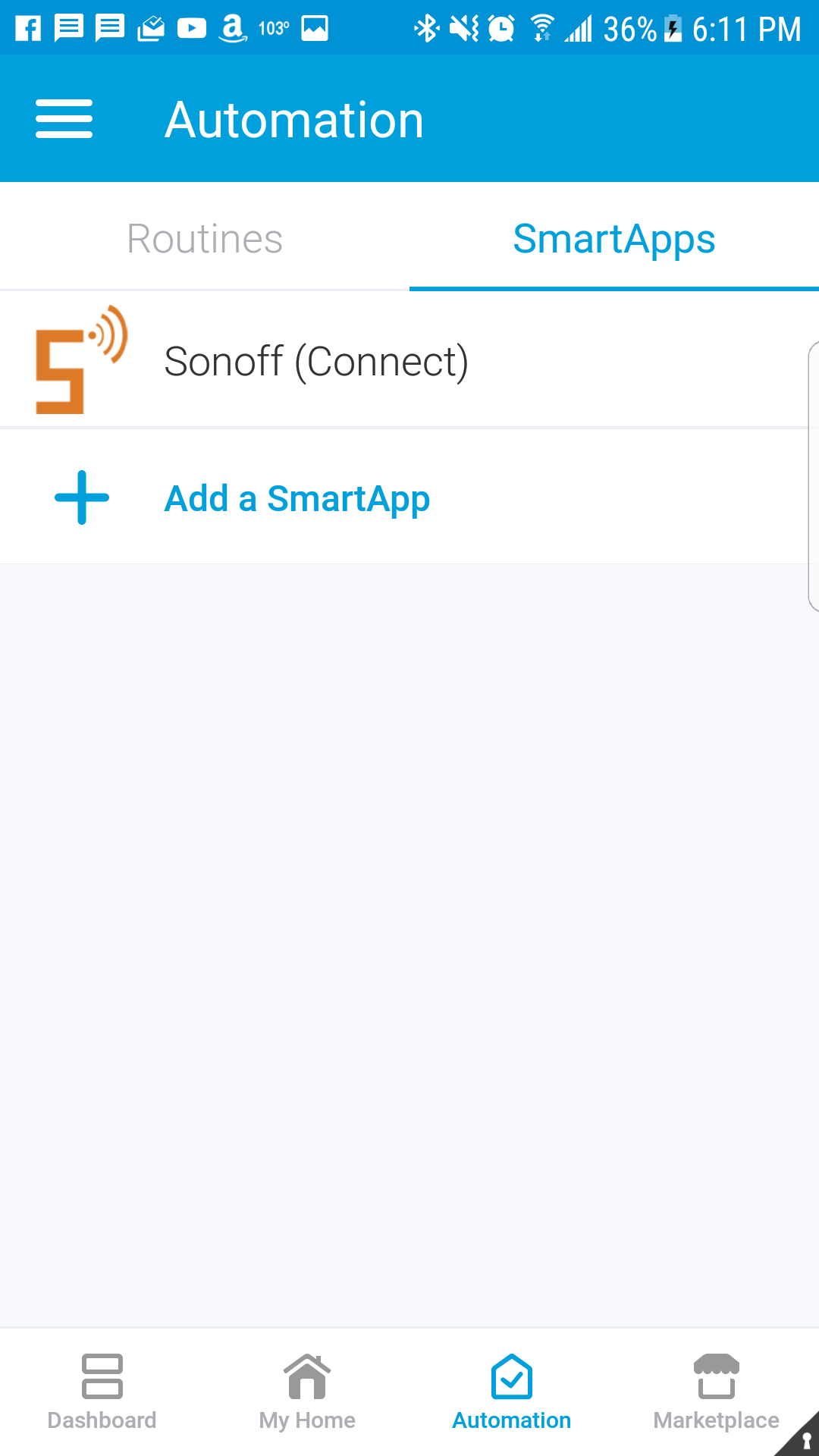

- SMARTTHINGS ADDING SMARTAPP FROM GITHUB INSTALL
- SMARTTHINGS ADDING SMARTAPP FROM GITHUB FULL
- SMARTTHINGS ADDING SMARTAPP FROM GITHUB CODE
You can check to see if the file is there by typing the command “ls” which will list out all the files in that directory. You may find it easy to just put it on the desktop, because then you can just type “cd ~/Desktop” and that should take you to your desktop. Step 2: Use the “cd” command to change the directory to where you keep the config.json file. Since the config file has already been updated in the previous step, all you have to do is transfer it over to the homebridge.
SMARTTHINGS ADDING SMARTAPP FROM GITHUB INSTALL
This may take 10-15 minutes depending on your internet and homebridge hardware.Īssuming your install went well, all that is left is to update the config.json file in Homebridge, and add Homebridge into your Home app. Step 1: SSH into your Raspberry pi from Terminal with “ssh 2: Install SmartThings with “sudo npm i -g homebridge-smartthings-v2” Download smartthings-nodeproxy to local folder Download and install all package dependencies: cd /smartthings-nodeproxy npm install Rename to config. Step 1: Open and login to the SmartThings Class app on your iPhone Installing the Homebridge SmartApp in SmartThings Classic The icon looks like a Blue ring on a white background. This is separate from the standard SmartThings app, so you’ll want to download it from the App store if you don’t already have it. It is given here as a brief showcase of the SDK, and is not meant to be a good candidate for a SmartApp. The next step will be on your iPhone in the SmartThings Classic App. import SmartApp from 'smartthings/smartapp' Examples The example SmartApp below is the equivalent of a simple Rule (if contact sensor opens/closes, turn lights on/off) which is easily achieved via our Rules API. This all you have to do in the browser, and should be pretty painless. Step 12: Scroll down to “OAuth” – Select “Enable OAuth in Smart App” Step 10: Select “Save” and then “Publish – For me”
SMARTTHINGS ADDING SMARTAPP FROM GITHUB CODE
Step 8: Paste the code you copied earlier. Step 7: Select the middle tab “From Code” If you had the previous SmartThings plugin, go ahead and remove that. If your Hub doesn’t show up then the Community Installer won’t show up in your SmartThings app, so this is critical. You can also try logging out and back in again. Sometimes you have to click around between “Locations” and “Hubs” until it shows up. Step 4: Make sure that your Hub shows up under “Hubs”. Step 3: Login with your Samsung or SmartThings Account Step 2: Go to the SmartThings IDE for your country. Step 1: Select the code on this page, and copy it. The easy way of installing this plugin is via the SmartThings Community Installer.
SMARTTHINGS ADDING SMARTAPP FROM GITHUB FULL
If you need to install Homebridge, i’ve got a full guide here. Just a few things before we get started I did this with a headless (monitor-less) Raspberry Pi controlled with a Mac via terminal, and an iPhone for the iOS part of things. The device state works perfectly no matter how you turn on or off your devices. This version of SmartThings homebridge plugin has been a whole lot more responsive and stable than before. So if you have the previous SmartThings plugin, you’ll have to completely remove it from Homebridge in order to get this new one to work and it is completely worth it. As of December 2019, the SmartThings plugin has been redone and updated, but has to be installed completely anew.


 0 kommentar(er)
0 kommentar(er)
